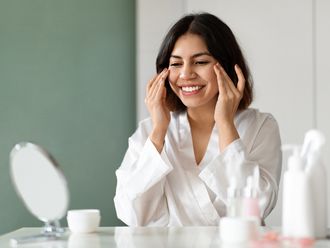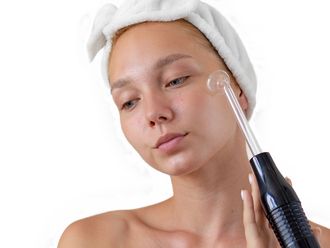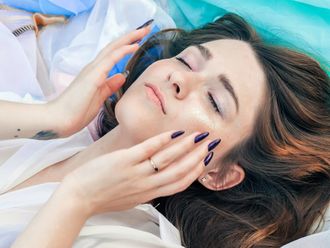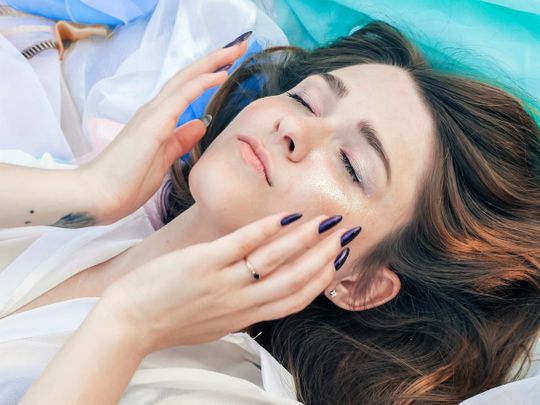
I was up late a few nights ago, scrolling through social media, when I came across some images which made me pause. Images of American celebrities Taylor Swift, Rihanna and Emma Watson, with glowing, dewy, baby-soft skin. I did what most would do. Looked up their age. It turned out that they are about my age, in their 30's and even older. How, I wondered? Why did I look a decade older than them? Had they discovered the Fountain of Youth?
Those were just some of the questions I had in mind. Of course I knew the answer. Professional beauty experts, skilled dermatologists, who tell them the key to maintaining a youthful appearance is through proper skin care.
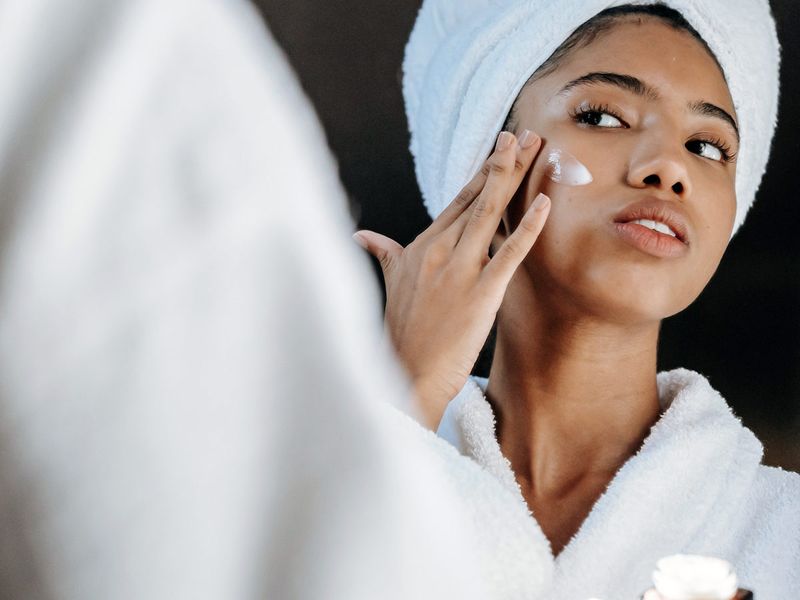
A lot of things have helped these stars and I know that I can't just walk in and get their skin.
However, my search that night also led me to the discovery of a trending skincare ingredient that could destroy the many evidences time keeps leaving on my skin. Behold ceramides, what experts describe as an essential ingredient for those who want to look their age and maybe, a little younger.
What are ceramides?
Like hyaluronic and collagen, experts tell us that ceramides occur naturally on the outer layer of our skin.
According to Dr Manasi Shirolikar, a consultant dermatologist based in Mumbai, India, the topmost layer of our skin is made up of skin cells called keratinocytes and lipids or fatty acids.
The lipids act as a glue and bind the skin cells together. This reinforces the skin barrier that keeps good things, like moisture within our skin and the toxins out. So, where do ceramides come in?

Ceramides form the majority of lipids or fatty acids in the skin barrier. These provide a tough and resilient framework for our skin.
Ceramides form the majority of lipids or fatty acids in the skin barrier. These provide a tough and resilient framework for our skin.
Dr Shirolikar explains the science behind the production of ceramides and says that our bodies make ceramides using sphingomyelin from cell membrane; the de novo synthesis in endoplasmic reticulum by condensation of palmitate and serine; or the recycling of pre-existing ceramides.

In short, our body makes ceramides in three different ways and yet, as we age, the production of ceramides slows down, making you want to look less and less at your reflection in the mirror.
If you’re tying your hair tight in a ponytail to stretch the skin of your temples slightly back, a common trait of being in your 30s, then it might be time to start understanding how ceramides work.

As we hit 30s, ceramides begin to reduce and this is one of the factors associated with ageing of our skin.
“As we hit 30s, ceramides begin to reduce and this is one of the factors associated with ageing of our skin,” says Dubai-based Pakistani expat Dr Saima Sheikh, who is a dermatologist from Lelara Aesthetic Clinic.
“Ceramides are epidermal lipids that occur naturally on the outer layer of our skin and bind and hold skin cells together. This helps our skin’s ability to retain moisture and keep it looking supple and healthy,” Dr Sheikh explains.
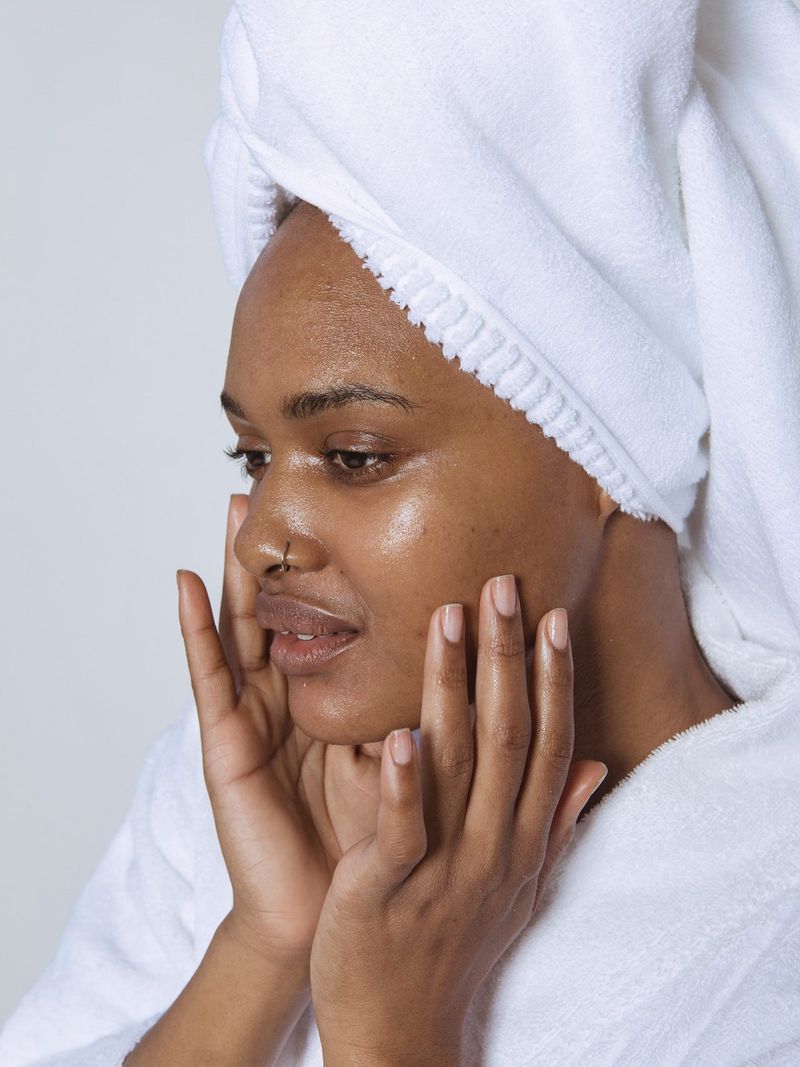
About 40 per cent to 50 per cent of cell lipid is ceramide, explains Dr Arjun Kumar Khatri, a Pakistani expat and dermatologist and cosmetologist, from Samnan Medical Centre, Sharjah.
“There are many types, but most important for skin are ceramide 1, ceramide 2 and ceramide 6-ll. All types of ceramides are waxy lipid molecules, found in cell membrane of cells. They are in abundance in skin cells,” says Dr Khatri.
Ceramides: Skin’s gatekeeper
Sometimes, age alone doesn’t age skin. It’s the harsh sunlight, the chlorine in our water, the pollutants in the air and bacteria or viruses that fester in our pores, every time our fingers touch our skin. Factors that weaken our skin’s protective layer or the barrier. This is where ceramides can help.

The main function of ceramides is to keep the skin hydrated. In addition to its lipid barrier effect, it also prevents microorganisms, toxins and pollution to enter through skin. It helps in the rejuvenation of skin and the protection against ultraviolet rays.
Ceramides form a strong lipid barrier in outer layer of skin, which helps in preventing water loss, Dr Khatri explains. “The main function of ceramides is to keep the skin hydrated. In addition to its lipid barrier effect, it also prevents microorganisms, toxins and pollution to enter through skin. It helps in the rejuvenation of skin and the protection against ultraviolet rays.”
When free radicals or chemicals and toxins enter our skin barrier, they break down our skin's collagen and cause skin blemishes like dark spots, fine lines and wrinkles.
Ceramides prevent free radicals from entering and help prevent skin infections by creating a strong outer layer of the skin. That's why they are called as the gate keepers for skin
“Ceramides prevent free radicals from entering and help prevent skin infections by creating a strong outer layer of the skin. That's why they are called as the gate keepers for skin,” Dr Sheikh says.
Ceramides are useful for people with eczema, a condition that causes dry, itchy and inflamed skin. Ceramides boost moisture in our skin and prevents it from cracking during harsh climate, she explains. “They reduce skin irritation, redness and increases firmness of the skin by holding the skin cells tight together.”

Ceramides are for everyone
One of the benefits of ceramides is that they suit every type of skin because they are naturally occurring and make up almost 50 per cent of the skin's outer layer.

When we lose ceramides from the skin it becomes sensitive, itchy, irritated and dry. When this happens, your skin barrier has been compromised and it is a direct indication to start using ceramides.
In fact, according to Dr Anna Lisnaik, a Ukrainian expat and a specialist dermatologist based in Dubai, “when we lose ceramides from the skin it becomes sensitive, itchy, irritated and dry. When this happens, your skin barrier has been compromised and it is a direct indication to start using ceramides.”
Of late, most beauty products seem to have ceramides as a key ingredient. The most popular one being the moisturising cream from CeraVe, which has three different types of ceramides mentioned in its skin care recipe. Before you reach for your wallet, experts revealed some natural ways of replenishing ceramide levels.
Dr Lisnaik says that there are certain types of food that can give your ceramide levels a boost. These include:
Natural oils are the rich source of skin ceramides like:
Jojoba oil
Grape seed oil
Sunflower oil
Poppy seed oil
Corn oil
Dairy, eggs, brown rice, sweet potato are also rich in ceramides.
Wheat and soy are also important because they contain a large amount of sphingolipids, which can boost ceramide production in the body.
"Wheat and soy are also important because they contain a large amount of sphingolipids, which can boost ceramide production in the body. Other foods that help include sesame seeds or sesame oil, coconut, grape seeds, peanuts, spinach, potatoes, sweet potatoes, rice, millets and fruits. There are also dietary supplements that can boost natural production of ceramides,” Dr Lisnaik explains.

However, experts advise that a topical application of ceramides rescues damaged skin or helps maintain the skin barrier and prevent it from breaking down further.
Dr Lisnaik stresses the importance of using synthetic or man-made ceramides, topically, especially for mature skin.
As we age, skin begins losing levels of ceramides. Mature skin needs additional applications of ceramides for functioning better. They are the building blocks of your skin that that keep it plump.
“As we age, skin begins losing levels of ceramides. Mature skin needs additional applications of ceramides for functioning better. They are the building blocks of your skin that that keep it plump.”
“Much like how collagen naturally decreases in our skin with age, the loss of ceramides makes your skin appear drier with pronounced fine lines. Using products with ceramides will decrease the appearance of fine lines,” says Dr Shirolikar.
How to use ceramides?
According to Dr Lisnaik, ceramides should be applied on damp skin and should be used with a daily face cream.
“Instead of applying ceramides separately, you will get better results when you combine ceramides with other skin care ingredients that compliment it. One of them is Niacinamide that seems to have a synergistic effect and are usually very safe to use because our skin tolerates them well,” explains Dr Arjun.
The best ways to use ceramides is as a serum or moisturiser, explains Dr Shirolikar.
“You can look for products with ceramides which also have other soothing ingredients like centella, allantoin, oatmeal extract and aloe vera.
“Ceramides can be paired with all actives. Most skin care products have these active ingredients such a Vitamin c, retinol, glycolic acid and salicylic acid. The most important benefit of using ceramides is that they increase your skin’s tolerance to those actives,” explains Dr Shirolikar.
Ironically, with an increase in awareness of skincare actives, more and more people are experimenting with skincare. Unfortunately, some of these experiments do go awry leading to an impaired skin barrier, she explains.
Ceramides help to soothe the barrier and repair it. They're a must for your winter skincare regime.
“This means red, itchy, blotchy skin that's extremely sensitive. Ceramides help to soothe the barrier and repair it. They're a must for your winter skincare regime,” Dr Shirolikar explains.
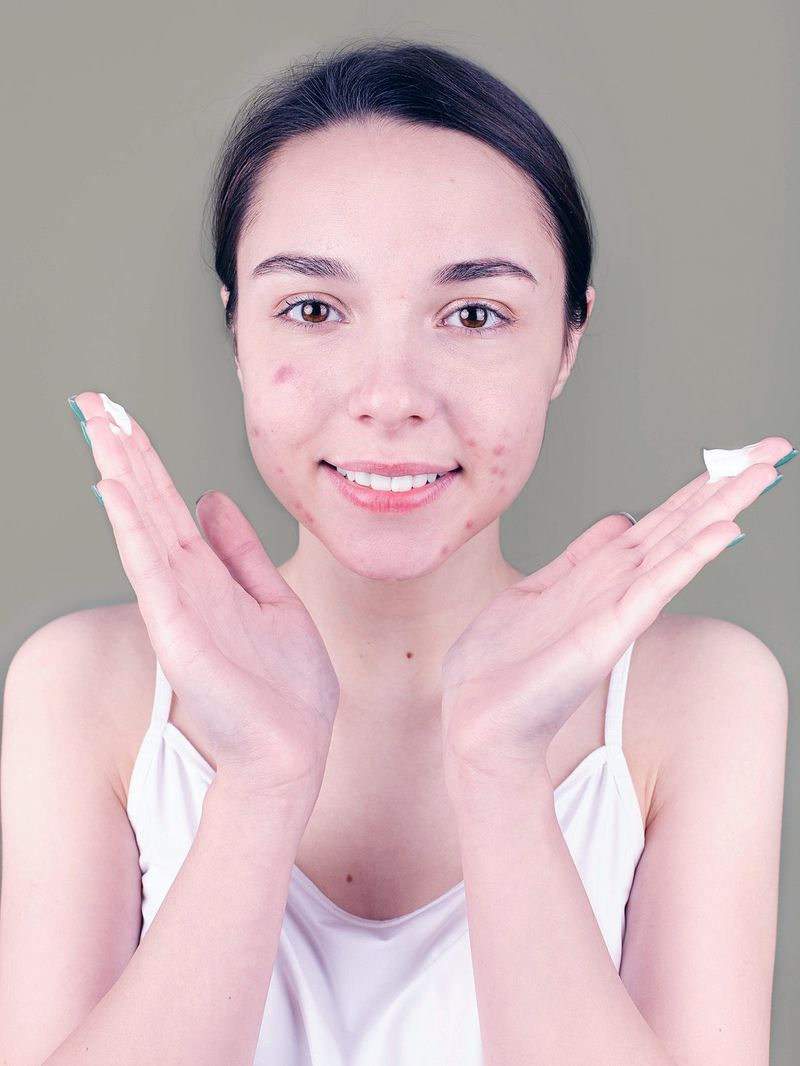
As far as the ageing process goes, the concerns about this is a set a lot earlier on women and even more so on women who are famous. However, some celebrities, who seem to have evergreen skin even when the cameras are not watching, use ceramides to look decades younger than they actually are.
If you’re getting started with ceramides then look to American celebrities like Hailey Bieber, Lucy Hale, Gwyneth Paltrow, Tracee Ellis Ross and Naomi Watts, who have revealed in the past that they do use moistures and serums that are rich in ceramides, for that glazed donut look.




